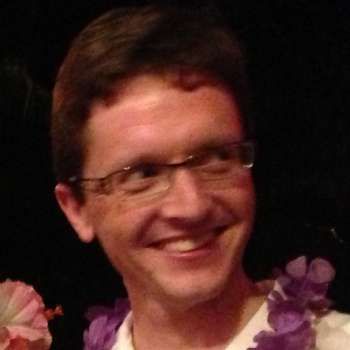Ultimately, the success or failure of a performance of Il barbiere di Siviglia (The Barber of Seville) is determined by whether or not it is funny. Rossini’s masterpiece, the one nineteenth-century comic opera to have held its place alongside the famous tragedies of the era, should have an audience in stitches. By that token, the opening night of the Sydney revival was a triumph. There were gales of laughter throughout thanks to the lively acting, with even the surtitle translators getting in to the spirit at times, as witness gems such as ‘Onto the macaroni your cheese has dropped’. It goes without saying that there was also much fine singing to enjoy in this well-worked revival of Elijah Moshinsky’s production.
Most of the action took place in Michael Yeargan’s beautifully constructed interior of Dr Bartolo’s house, but the opera began in the street outside, with a row of radically foreshortened, waist-high houses as backdrop. While the illusion of distance wasn’t entirely successful, the sight of a doll-sized model of Bartolo scuttling out of his house raised a laugh. The arrival of Count Almaviva on a bike wearing bow tie and boater hat cued the audience to expect an updated early twentieth-century setting, and this was confirmed by the hairstyles on the backcloth during Figaro’s famous opening number. Thereafter, most of the frolics took place inside Bartolo’s lavish mansion, whether in Rosina’s pink bedroom, Bartolo’s surgery, or the lavish reception rooms. The only brief change was for the Act II storm interlude, where pedestrians and cyclists battled against the wind with a backcloth hiding the rest of the set.
The opera stems from an era before the male voice became focussed on power rather than flexibility, so all the male singers were expected to display nifty passage-work. This is perhaps most famously expounded in Figaro’s opening aria ‘Largo al factotum’. From the very first notes, Paolo Bordogna gave us a Figaro filled with boundless energy and charm, the undoubted star of the show. He was utterly at home in the skin of the genial Barber, channelling something of the ebullient comedic energy of the great Buster Keaton. He mastered the rapid patter singing with aplomb, and had great ringing top notes to boot.
Also very much at home within the style was the versatile Warwick Fyfe, excellent as ever as Bartolo: he blustered convincingly, and was a rock-solid presence in the ensembles and in his solos. The relatively weak link in a high-calibre cast was Kenneth Tarver’s Almaviva. He had the right sort of light tenor voice for the part but a lack of volume led to him being swamped at one or two places in the quicker ensembles. His acting was also the least convincing of the main characters.
The strong-voiced David Parkin as Basilio may have been attired in old-fashioned clerical garb, but his big solo number ‘La calunnia è un venticello’ had more than a touch of the infernal to it. Beginning with his sleeve in front of his face in clichéd vampire style, he gradually grew in force and at the climax, channelled so much menace that the lights in the room fused. Samuel Dundas didn’t have much of a chance to make an impression as Fiorello at the start, but as the mostly mute Ambrogio (in this production a dopey, dissolute, door-opening servant) he stole scene after scene with his comic acting.
Making her role debut, Anna Dowsley was the picture of dramatic and vocal assurance as Rosina, capturing the saucy resourcefulness of her character to a T. Her opening aria, the well-known ‘Una voce poco fa’, was much embroidered and allowed us to enjoy an impressive display of vocal agility. Jane Ede as Berta had only one major aria, but it was worth the wait. She was also a stalwart presence in the major ensembles, her soprano ringing clear.
The suggestion of the silent movies was furthered by the antics of the male chorus members who channelled the Keystone Cops when they made their various interventions as policemen. A number of non-singing actors, including an accident-prone young gent and a very pregnant woman, contributed to the frenetic activity on stage, and ensured that there was always something to raise a smile.
The orchestra sounded crisp under Andrea Molino, and a special word of commendation is due to Anthony Legge on the harpsichord, who was sensitive to the singers and varied in his keyboard realisations (with some nice illustrative touches, such as a tremolo when Bartolo was shaking the thermometer). Opera as a genre may more usually be associated with the sublime, but if you want to see something genuinely funny, then this production can be warmly recommended.




